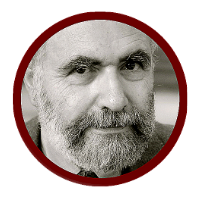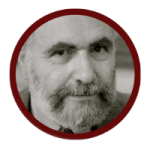The paradox : European Jewry looks healthy and secure ; but European Jews worry about the "expiry date".
1. The Paradox
European Judaism looks healthy, and secure. Religious and cultural activities are everywhere on the rise. Last December, in the southern German state of Baden-Württemberg, an exquisite new synagogue was inaugurated in Ulm, the most recent in a long series of new or recently restored sanctuaries in Germany. In Paris, a European Center for Judaism will soon be built under the auspices of the Consistoire (the French union of synagogues) and the French government. Many European capitals now harbor major Jewish museums or Holocaust memorials. In Paris, a visitor can proceed from the National Museum for Jewish Art and History housed at the Hôtel de Saint-Aignan, a 17th-century mansion in the Marais district, to the national Shoah memorial near the Seine, to the Drancy Holocaust memorial in the northern suburbs. Berlin hosts the Jüdisches Museum designed by Daniel Libeskind; the cemetery-like grid of the Mahnmal, the memorial to the murdered Jews of Europe whose concrete slabs are spread over an entire city block in the center of the capital; and another national Holocaust memorial and educational center at Wannsee.
And yet, despite all their success and achievement, the majority of European Jews, seconded by many Jewish and non-Jewish experts, insist that catastrophe may lie ahead.
One does not have to look far to see why. A large-scale survey commissioned by the European Union’s Agency for Fundamental Rights (FRA) tells a tale of widespread and persistent anti-Semitism. Although the full study is not due to be released until October, the salient facts have been summarized by EU officials and by researchers like Dov Maimon, a French-born Israeli scholar at the Jewish People Policy Institute in Jerusalem. Among the findings: more than one in four Jews report experiencing anti-Semitic harassment at least once in the twelve months preceding the survey; one in three have experienced such harassment over the past five years; just under one in ten have experienced a physical attack or threat in the same period; and between two-fifths and one-half in France, Belgium, and Hungary have considered emigrating because they feel unsafe.
Statistics from my native France, home to the largest Jewish community in Europe, go back farther in time and tell an even darker tale. Since 2000, 7,650 anti-Semitic incidents have been reliably reported to the Jewish Community Security Service and the French ministry of the interior; this figure omits incidents known to have occurred but unreported to the police. The incidents range from hate speech, anti-Semitic graffiti, and verbal threats to defacement of synagogues and other Jewish buildings, to acts of violence and terror including arson, bombings, and murder.
And that is just France. All over Europe, with exceptions here and there, the story is much the same. Nor do the figures take into account the menacing atmosphere created by the incessant spewing of hatred against the people and the state of Israel at every level of society, including the universities and the elite and mass media, to the point where polls show as many as 40 percent of Europeans holding the opinion that Israel is conducting a war of extermination against the Palestinians; or the recent moves to ban circumcision and kosher slaughter; or the intense social pressures created by the rise of radical and often violent Islam of the kind that targeted Samuel Sandler’s son and grandchildren (and of which more below).
Statements by EU officials and others, even while they acknowledge the “frightening” degree of anti-Semitism prevalent in today’s Europe, and even while they promise to “fight against it with all the means at their disposal,” also contend (in the words of the prime minister of Baden-Württemberg) that anti-Semitism is “not present in the heart of society” or in “major political parties.” Such bland reassurances have quite understandably brought little comfort.
Against this backdrop, it is little wonder that even so sober an analyst as Robert Wistrich of the Hebrew University of Jerusalem, author of definitive works on the history and dynamics of anti-Semitism, has concluded that although the final endpoint of European Jewry may be decades in coming, “any clear-sighted and sensible Jew who has a sense of history would understand that this is the time to get out.”
2. “A Sense of History”
For many European Jews, there is indeed a déjà vu quality to the present situation. Like Israelis, but unlike most American Jews, today’s European Jews are survivors, or children of survivors, either of the Holocaust or of the near-complete expulsion of Jews from Islamic countries that took place in the second half of the 20th century. They know, from personal experience or from the testimony of direct and irrefutable witnesses, how things unfolded in the not too distant past, and how a seemingly normal Jewish life could be destroyed overnight. When anti-Semitic incidents or other problems accumulate, they can’t help asking whether history is repeating itself.
“Call it the yogurt’s-expiration-date syndrome,” an elderly, Moroccan-born Frenchman recently said to me. He elaborated:
« Right after Morocco won its independence from France in 1956, my family joined the country’s ruling elite. My father, a close friend of King Mohammed V, had access to everybody in the government. It went on like that for two or three years. Then one day, out of the blue, Father told us we were leaving. We children asked why. “We’ve passed the yogurt’s expiration date,” he said. “We have no future in Morocco; as long as we’re free to go, we must go.” So we left, leaving behind most of our money and belongings. Ever since then, wherever I’ve lived, I’ve been on the lookout for the yogurt’s expiration date. In France, I think it’s close. »
To contemporary European Jews like this one, today’s anxieties thus also recall the crucial choice they or their parents made some 30 or 50 or 70 years ago when, having survived the Holocaust, they resolved to stay in Europe—more accurately, in Western Europe, under the American umbrella—or, having been forced out of Islamic countries, to flee to Europe. Was this the right choice, after all? Hadn’t a majority both of the surviving European Jews and of the refugees from the Arab world decided otherwise?
Yes, they had; and here too a little history is helpful. Back in the early 1930s, there were about 10 million self-identified Jews in Europe (including the USSR). There were also others—estimates range from one to three million—who for one reason or another had converted to Christianity but retained a consciousness of their Jewish identity or who had intermarried or otherwise assimilated into Gentile society without converting.
Half of this prewar European population perished in the Holocaust. Of the five to seven million survivors, about 1.5 million emigrated to the newborn state of Israel throughout the late 1940s, 50s, and 60s. Another half-million made it to the United States—a number that would surely have been higher had the restrictive quota system introduced in the 1920’s not still been in place. About 200,000 wound up in Canada, the Caribbean, Central and South America, South Africa, and Australia/ New Zealand. As for the roughly 2.5 million locked up in the Soviet Union and Soviet-dominated Eastern Europe, most made their way to Israel or the United States whenever the opportunity presented itself.
All in all, then, about two-thirds of post-Holocaust European Jews left Europe, and only one third remained. And the same is true of the more than one million Jewish refugees from Islamic countries. Upon being expelled or encouraged to leave, two-thirds headed to Israel and one third to Europe (or, in a few cases, to the United States or Canada). The proportion might vary according to country of origin—90 percent of Iraqi and Yemeni Jews emigrated to Israel, versus just 30 percent of Egyptian Jews— but the total ratio remained two-to-one against the continent.
What then motivated the minority that either stayed in or opted for Europe? For the most part, Jews who before the war had been citizens of Western European countries were eager, once their rights and property were restored, to resume their former life as soon and as completely as possible, even at the price of a certain selective amnesia about their country’s wartime behavior. What the researcher Guri Schwarz observes about postwar Italian Jews can be generalized to others:
What emerges from the Jewish press, from memoirs, and from diaries as well as from declarations of community leaders is the marked inclination to deny Italian responsibility in the origin and implementation of persecution for the period 1938-1943 as well as for the period of mass murder and deportation that followed the [1943] armistice with the Allied forces. This behavior, in many ways similar to that adopted by Jews in other Western countries—such as France, Holland, and Belgium—can be understood if we consider the intense desire to reintegrate into society and the conviction that such a process would be easier if [Jews] avoided attracting too much attention to their specific tragedy.
Another factor here was that many refugees from Islamic countries were technically also West European citizens, and entitled as such to resettlement in the “mother country” with full rights and benefits. This was true of Algerian Jews, who as a group had been granted French citizenship in 1870; of many Tunisian or Moroccan Jews who had opted for French citizenship under France’s protectorate; and of some Jews from Egypt, Lebanon, and Syria who were registered as Europeans under the terms of longstanding contracts between the European powers and the Ottoman Empire. Libyan Jews, as former Italian colonial subjects, were admitted to Italy, and residents of the former Spanish protectorate in northern Morocco to Spain.
As for refugees with no claim to citizenship in a West European nation, they might enter first as asylum seekers and then apply for permanent status. In The Man in the White Sharkskin Suit, her poignant memoir of her family’s “riches-to-rags” expulsion from Egypt in 1956, Lucette Lagnado recalls the “relatively efficient, coordinated system of social services and relief agencies dedicated to helping refugees” in Paris:
« Funded by private philanthropists like the Rothschilds, as well as by deep-pocketed American Jewish organizations, the French groups tried to lessen the trauma. Refugees were immediately given a free place to live—typically a room or two in an inexpensive hotel—along with subsidized meals. They were put in contact with officials who would help them find them a permanent home somewhere in the world. »
In the end, the Lagnados secured American visas, but many other Egyptian refugees in Paris would strike roots in the “narrow, winding streets” around the relief agencies and the Great Synagogue in the ninth arrondissement, just like previous waves of refugees from Eastern and Central Europe, “old furriers who still spoke German, and Polish, and Yiddish.”
Culturally speaking, many of these new outsiders felt at home in Western Europe. Before the war, the Jewish upper and upper-middle classes in Central and Eastern Europe had learned French and English along with German and Russian and had imbibed bourgeois Western European values. The Jewish elites in Morocco, Turkey, Egypt, Syria, and Iran had also been formed in French, German, or Anglo-Saxon schools. While in Paris, Lucette Lagnado’s French-educated mother, otherwise very Jewish and strictly kosher, would take her regularly to Parc Monceau to remind her that “this was Marcel Proust’s playground. . . . And she said it with so much feeling and intensity that I knew I was expected to absorb the magic.”
End of Parts One and Two
© Michel Gurfinkiel & MosaicMagazine, 2013
Michel Gurfinkiel is the Founder and President of the Jean-Jacques Rousseau Institute, a conservative think-thank in France, and a Shillman/Ginsburg Fellow at Middle East Forum.


